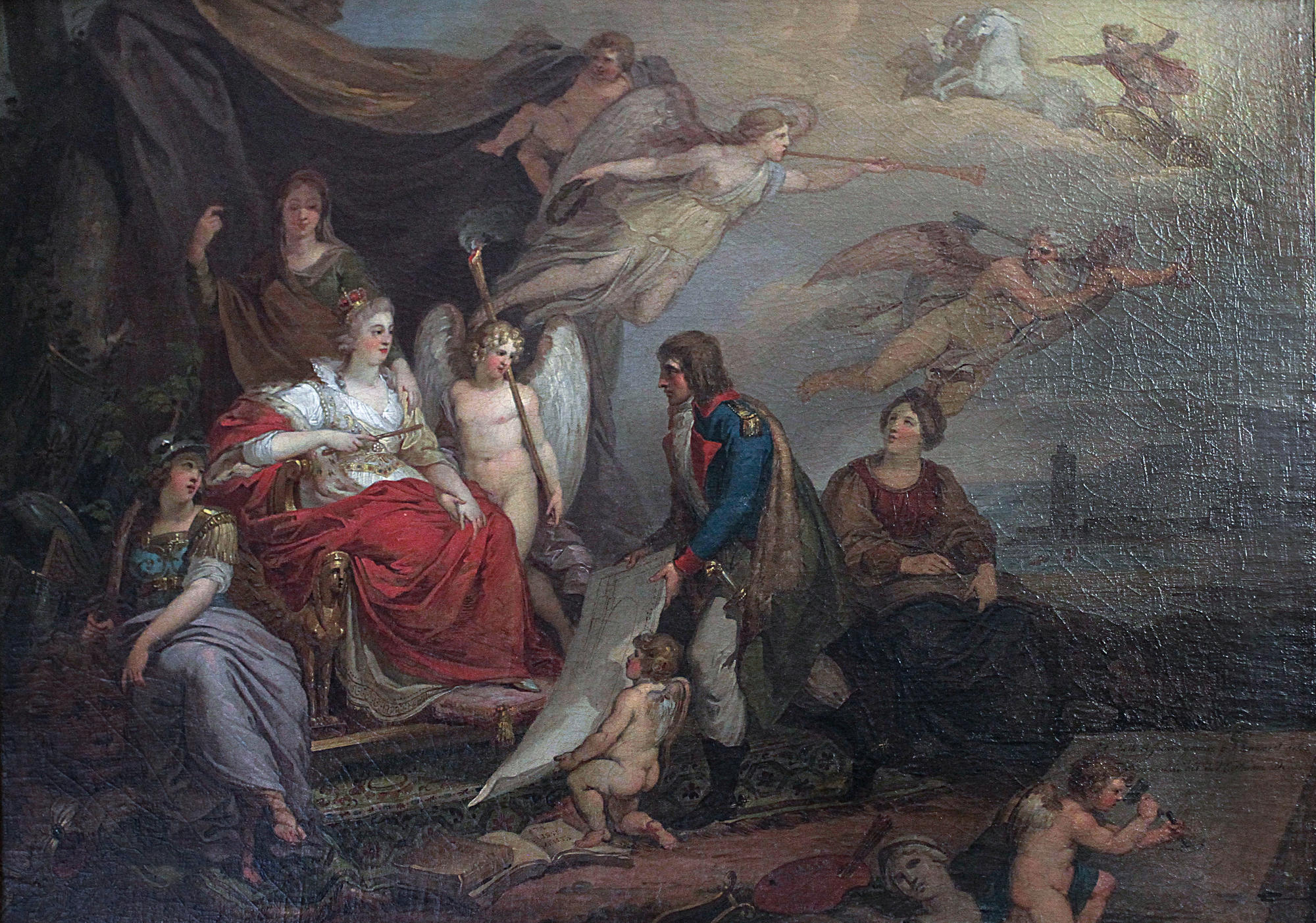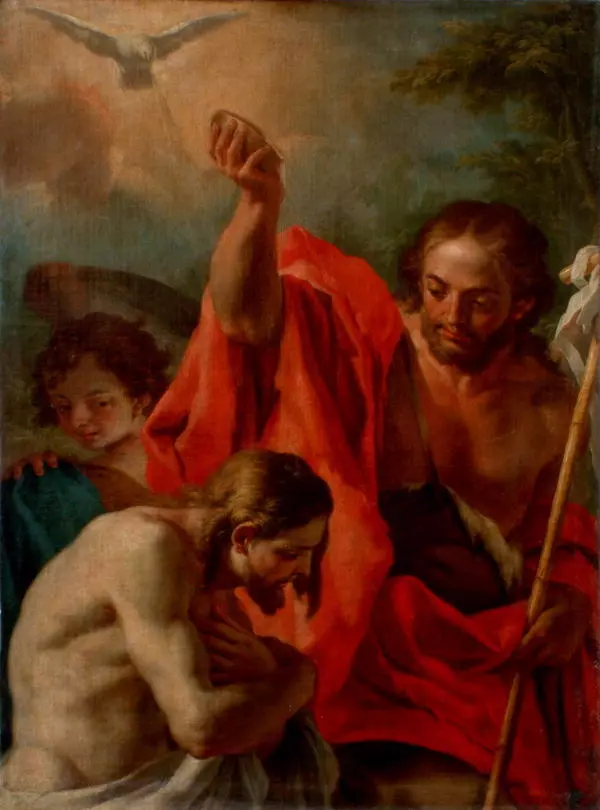In 1760 - 1762 French artist, Louis Jean Francois Lagrene lived in St. Petersburg. He came there in response to the invitation of Empress Yelizaveta Petrovna and became a royal painter and professor of historic painting in the Academy of Arts. After his return to France, Lagrene continued to fulfill orders from Russia.
The exact date of this composition creation is unknown, however it is certainly not before the end of the 1760s as the painting refers to the construction of the Academy of Arts, which started only in 1764, and the war between Russia and Turkey broke out in 1768.
On the panting the artist depicted Empress Catherine II seated on the throne. Appearance of the Empress is a romantic image rather than a documentary copy. That explains why she is wearing a Western European instead of a Russian imperial crown.
Figures of sphinxes serve as the throne’s armrests and, according to specialists, symbolize its inviolability and firmness comparable to Egyptian monuments as well as the ruler’s constant wisdom.
Catherine the Great is surrounded by allegoric figures of virtues. Since the Renaissance era European painters resorted to speaking images as means of giving life to abstract concepts and inspiriting them. Allegories in pictorial art made ideas observable and complicated things easy to understand.
According to art experts, Strength with its impediments: lion, oak and armor, as well as Turkish trophies (banners and a turban), is depicted on the left. Behind the Empress’s back, there stands Justice with scales in its hands. At the right, there is the Genius of Life with a burning torch.
A man, probably an architect, is inquiringly looking at the Empress. He is presenting her a plan of the future building with a round inner courtyard similar to the Academy of Arts in St. Petersburg.
Behind him there sits History who is carefully writing down glorious deeds of the Empress into a book. At the forefront, the author depicted a winged child – putti carving a Latin verse on a stone plate.
The landscape at the back of the painting is also allegoric: a lighthouse helping swimmers to get to the seashore symbolises Education. In the clouds, we can see winged Glory with a trumpet and bay crown who is evicting an old man with a scythe and sand-glasses symbolizing Time. At the top right corner of the painting, the artist depicted a chariot with the God of Sun Apollo.
The exact date of this composition creation is unknown, however it is certainly not before the end of the 1760s as the painting refers to the construction of the Academy of Arts, which started only in 1764, and the war between Russia and Turkey broke out in 1768.
On the panting the artist depicted Empress Catherine II seated on the throne. Appearance of the Empress is a romantic image rather than a documentary copy. That explains why she is wearing a Western European instead of a Russian imperial crown.
Figures of sphinxes serve as the throne’s armrests and, according to specialists, symbolize its inviolability and firmness comparable to Egyptian monuments as well as the ruler’s constant wisdom.
Catherine the Great is surrounded by allegoric figures of virtues. Since the Renaissance era European painters resorted to speaking images as means of giving life to abstract concepts and inspiriting them. Allegories in pictorial art made ideas observable and complicated things easy to understand.
According to art experts, Strength with its impediments: lion, oak and armor, as well as Turkish trophies (banners and a turban), is depicted on the left. Behind the Empress’s back, there stands Justice with scales in its hands. At the right, there is the Genius of Life with a burning torch.
A man, probably an architect, is inquiringly looking at the Empress. He is presenting her a plan of the future building with a round inner courtyard similar to the Academy of Arts in St. Petersburg.
Behind him there sits History who is carefully writing down glorious deeds of the Empress into a book. At the forefront, the author depicted a winged child – putti carving a Latin verse on a stone plate.
The landscape at the back of the painting is also allegoric: a lighthouse helping swimmers to get to the seashore symbolises Education. In the clouds, we can see winged Glory with a trumpet and bay crown who is evicting an old man with a scythe and sand-glasses symbolizing Time. At the top right corner of the painting, the artist depicted a chariot with the God of Sun Apollo.



